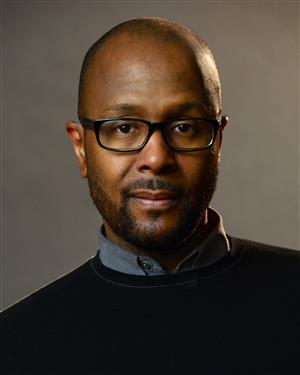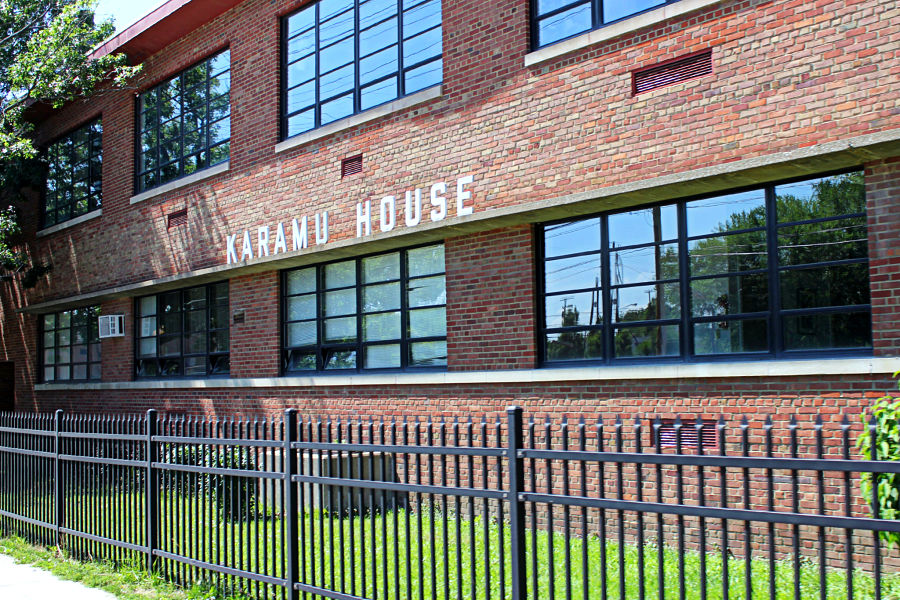“The fox knows many things, but the hedgehog knows one big thing.”
If you work in theatre management or in business as a whole, you’ve likely heard of Jim Collins and his book Good to Great, in which he explains that organizations that focus and invest in their core competitive advantage—the hedgehog’s one big thing—are what distinguishes a successful organization from the rest. Apple focuses on innovative technology, and Southwest on creating a superior customer experience. The focus on that core value is what drives the organization forward.
But as I spoke with Tony Sias, president and CEO of Karamu House in Cleveland, I started to consider whether this parable may apply well to organizations, but perhaps not to its leaders. It is my contention that a leader must be a fox and a hedgehog: To succeed you must have a focus on the one thing which allows the company to thrive, while also having an array of tools in your toolbox.
This is what I discovered when speaking with Sias about one of the most overlooked success stories in our field: how a century-old theatre of color, once in a state of crisis, has been revitalized and rejuvenated. In a time when there are questions about the durability of theatre organizations, Karamu House’s journey over the last four years serves as a case study to the importance of management and leadership operating in tandem to pull the company from the brink of collapse.

Before there was a turnaround came the down time. In 2015, Karamu faced fiscal issues and a shrinking audience base, and had even lost its 501c3 nonprofit status. This prompted the creation of a strategic plan. Karamu House was operating with an interim executive director at the time. and the board selected Sias to fill the permanent role of president and CEO to implement the strategic plan. His marching orders were to “crystalize the mission, vision, and goals for the company.” This required a review of the core programming at Karamu House and its ties to the organization’s mission.
Sias looked at troves of data about Karamu’s programming in recent years. A day care center, which Karamu had long operated, had the capacity to serve 100 young people but only served 10-12 (the day care was later eliminated).
Sias also investigated every aspect of the company’s finances (some of which he described as “breathtaking,” and not in a good way) to gain a true understanding of the costs of running the theatre. Prior to 2015, Karamu’s total revenue hovered between $1.5-1.6 million, and it had operated with a deficit for years. He also noticed a key component missing from its mission: There was no mention of theatre.
In addition to assessing the programming of the organization, Sias did a listening tour with donors, community members, artists, foundations, and civic leaders. “I had an open door policy where anyone could come in at any time and speak with me about Karamu,” he says. Sias, well known as a teacher in the Cleveland community, had built trust as a leader, which “allowed people to vent, share their concerns and their aspirations for what they wanted Karamu to be,” he says. What he learned from the community was that they desired different forms of entertainment and wanted a high-quality customer experience. Sias took action on both critiques by incorporating comedy, slam poetry, and the visual arts into the season. Today Karamu has a renovated lobby space, gallery, and lounge area.
It was also essential to Sias that the work of Karamu needed to be “inclusive and unapologetically Black.” In other words: to have a variety of artistic programming, all of it through the lens of the African diaspora. With more than 90 theatres in Northeast Ohio, finding ways to be unique and competitive could only be achieved with programs and investments which aligned with Karamu’s overall mission and strategy.
During the realignment of the company’s programming, Sias met with key funders in Cleveland to fill them in on Karamu’s new direction. “We wanted them to know what was part of the old Karamu and what is part of the renaissance of Karamu,” Sias explains. He also extended invitations to “come and experience our programs, while also being honest about the opportunities and challenges.”
The interactions with foundations ended with an unexpected payoff. For example, over the course of two years, Karamu took meetings with the George Gund Foundation. At the end of the third year, Karamu presented a grant proposal for $500,000 in capital and operating support. “A staff member from the foundation came down to my office to say, ‘I’m sorry, we can’t meet your request,’” Sias recalls. “Instead, we’re giving you $1.5 million.’”
This provided a huge signal to Karamu: Their strategy was working. Other foundations in the Cleveland area, such as the Cleveland Foundation and KeyBank Foundation, also made investments in Karamu House, due to its demonstrated stability and growth. In the past year, Karamu House ended its budget with a significant surplus and approximately $1.8 million in total revenue.
Sias has added programming to demonstrate the diverse range of talent in Cleveland, which has helped to increase audiences for its theatre productions. During his listening tour, for instance, Sias learned that stand-up comics were performing all over the city, but some families did not want to attend an unfamiliar venue. So he added comedy to the programming, and Karamu’s historic standing in the community made it a draw.
While Karamu House is miles ahead of where it was four years ago, Sias admits it hasn’t been an easy road. “There were moments where I felt like Sisyphus pushing the rock up the hill,” he says. “But I realized in this work that it wasn’t about Tony Sias; this was about moving an organization from surviving to thriving.”
Through the experience, Sias garnered several lessons on leadership and turnarounds. For one, he notes, the board was fully engaged throughout and collaborated with him and the staff. “They introduced Karamu to key funders and stakeholders, helped people understand where the organization stood, and were present at events in the community.” These people also had critical institutional knowledge needed in order to move things forward. Listening was another clear takeaway.
Lastly, Sias spoke of his staff as one of the theatre’s biggest assets. He has come to realize that recruiting top talent to his organization is key to success. He searched for talented individuals who not only had expertise within their given field but had an interest in the arts, no matter how small. This fits another principle of Collins’s book: “Get the right people on the right bus, in the right seat.”
All of this presents a critical observation about which narratives we value in our field. The fact that the Karamu rejuvenation story has mostly flown under the radar of media coverage should challenge our notions and narratives of what is deemed “successful” in terms of management ability and acumen. Many of the lessons I have looked to in management have been from predominantly white theatres with large budgets and resources to manage both fiscal and mission-based crises. But there are practical management skills and expertise to be learned from theatres of color and arts organizations with smaller budgets. It is imperative that we find a nuanced way to analyze failures, of course, but to also celebrate success in theatre.
Al Heartley is managing director at the Virginia Wadsworth Wirtz Center at Northwestern University and Principal at ALJP Consulting.


